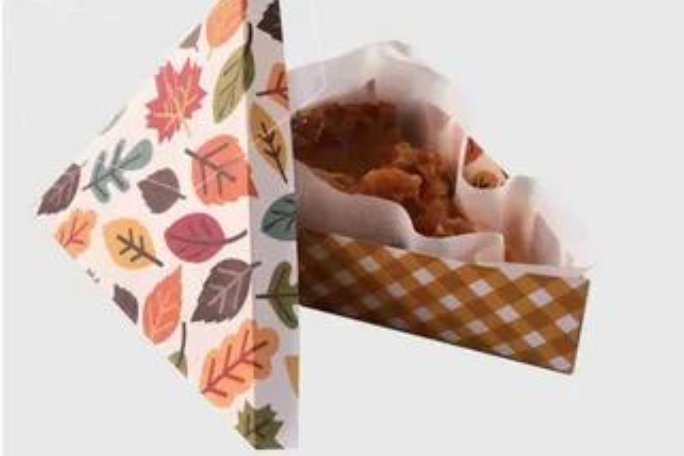One of the more underrated ingredients in the sea is masa go. Masa go is also known as capelin roe and is fish egg harvested from the capelin, a small forage fish that lives in the cold waters of both the Atlantic and Pacific Oceans. MAs ago is the staple globally, especially as a topping for sushi and to flavor any number of dishes; it’s frequently used in Japanese cuisine. Its delicate look may not at first catch your attention, but masa go gives an extra-ordinary mix of texture and flavor that can make a big difference in a dish.
This article discusses the source of masa go, its usage in the kitchen, its nutritional content, and a comparison to similar types of fish roe.
What Is Masa go?
Masa go is the roe (eggs) of the capelin, which is a species of fish belonging to the family of smelt. Capelins, belonging to the Arctic and North Atlantic Oceans, represent an important component of marine ecosystems in the form of a forage fish, with all these species feeding larger predators like whales, seals, and seabirds. Capelin roe is obtained mainly from female capelins during their spawning season in the colder months of the year.
Masa go is normally small, orange, and crispy, thus becoming an appetizing topping for sushi and sashimi. Masa go has a slightly salty taste with an almost mild fishiness, though milder compared to other roes such as salmon roe, kimura. This gentle yet savory taste makes it a very versatile ingredient within many cuisines, particularly Japanese dishes.
Masa go in Japanese Cuisine
Masa go can be credited to perhaps one of the strongest associations with Japanese food. It is commonly used as a topping or garnish for sushi rolls and other seafood delicacies like sashimi. The bright orange color and crunchy texture of masa go add a pleasing appearance and succulent texture to so many popular dishes. Masa go, whether it is by itself or incorporated into a dish, balances out fish and seaweed flavors while complementing the flavors from the rice, so nutritious, savory, and salty flavor.
Masa go, however, is more commonly used as a topping for sushi rolls, often when serving California rolls or spicy tuna rolls. Sprinkled over the outside of the roll, it adds subtle crunch and a salty taste to the food as a whole. Masa go can also be found in chiasmi bowls, an arrangement where ingredients are placed over a bed of rice, rather than rolled. Masa go in this scenario not only adds beauty to the dish but also another flavor that has complemented the dish.
Masa go is not limited to sushi; it can be applied in many dishes like salads, sauces, or even omelets. Masa go is liked by chefs because masa go has a mild flavor that does not overpower other ingredients but complements them well.
Nutritional Profile of Masa go
This masa go not only tastes delicious but also has an impressive nutritional profile. For those in search of healthy seafood, masa go contains vitamins, minerals, and healthy fats. Let’s take a closer look at what masa go has.
Protein Masa go is good protein, which, of course, makes tissue repair. Furthermore, it even promotes the growth of muscles as well as other body functions. A small amount of masa go brings about a huge amount of proteins without much calorie consumption.
Omega-3 Fatty Acids: Like most types of fish roe, masa go has omega-3 fatty acids associated with anti-inflammatory properties and a healthy heart. Omega-3s can help prevent or reduce the possibilities of a heart disease, improve function about brain activity, and promote well-being in one’s life generally.
Low in Calories: Masa go is low in calories and, therefore, very useful for those who follow their caloric intake intently. Even though the flavor is so rich, a serving of masa go contains approximately 40-50 calories. That would really be helpful in adding flavors to dishes without greatly affecting calorie counts.
Vitamins and minerals: Masa go is rich in essential vitamins and minerals, which include vitamin B12, selenium, and magnesium. Vitamin B12 is an essential nutrient for good health nerve function and production of red blood cells, while selenium is a powerful antioxidant that plays a significant role in the reduction of oxidative stress in the body.
Cholesterol and Sodium: Though masa go has many health benefits, it still consists of high amounts of cholesterol and sodium. So, if you want to maintain your cholesterol level or blood pressure, then take it in proportion.
Masa go vs. Tobiko: What’s the Difference?
If you are used to Japanese food, you might be familiar with tobiko, which is one of the most used kinds of roe. It is the flying fish roe. On cursory observation, masa go and tobiko might look pretty much alike. However, there are numerous differences between these two.
Size: Tobiko is larger in size compared to masa go. The latter is more significant in terms of texture being crunchier also. Masa go, on the other hand, is so tiny in size that it has been considered even more delicate in terms of texture.
Color: Tobiko is naturally a brighter, more vibrant orange than masa go, though both can be colored artificially. Tobiko can also be found in other colors such as green (infused with wasabi) or black (infused with squid ink). Masa go tends to have a more muted orange or yellow color.
Flavor: Flavor-wise, tobiko is a bit stronger than masa go with stronger brininess in flavor. Masa go has a sweet and mild flavor, making it work better for dishes that need to have a more subdued taste.
Price: Tobiko is generally much pricier than masa go since flying fish roe are more complicated to harvest and it is also considered a high-end ingredient. Masa go, on the other hand is cheaper. It is favored in restaurants and home cooking because of its affordability.
Uses for Cooking Except in Sushi
Masa go is mostly associated with sushi, though its culinary potential does not go beyond the confines of Japanese cuisine. Masa go can be used creatively when preparing a range of dishes, adding flavor and texture.
Pasta dishes. Masa go is sometimes added to pasta dishes in fusion cuisine, where it gives the sauce a seafood flair. Masa go can be added into a creamy sauce or sprinkled as a garnish to pasta dishes that include seafood – such as shrimp or scallops.
Salads: Masa go adds really great flavor to salads, especially seafood salads or if you like to give your salad an Asian flavor through the dressing. The roe adds subtle crunch along with a burst of flavors to the dish, making the dish so refreshing with all the fresh ingredients.
Dips and Spreads: You can blend masa go into the dips or spreads to give them an exclusive salty taste. For instance, you could blend it into a cream cheese or mayo-based spread to serve with crackers or bread.
Rice Bowls: Masa go can be a great addition as a topping to the rice bowl, adding extra texture and flavor to fish, chicken, or vegetable dishes.
Conclusion
The small masa go packs quite a bit in terms of flavor and versatility. Being a sushi enthusiast or a home cook looking for something new, masa go presents the perfect way to enhance your dishes with its delicate texture and mild savory taste. This small tomato is filled with protein, omega-3 fatty acids and crucial vitamins. It’s very delectable and nutritious. The next time you drop by the sushi restaurant or the grocer, give masa go a shot-you may just find a new favorite ingredient.




